Moto E6 Play Review
Moto E6 Play Review
You can do better
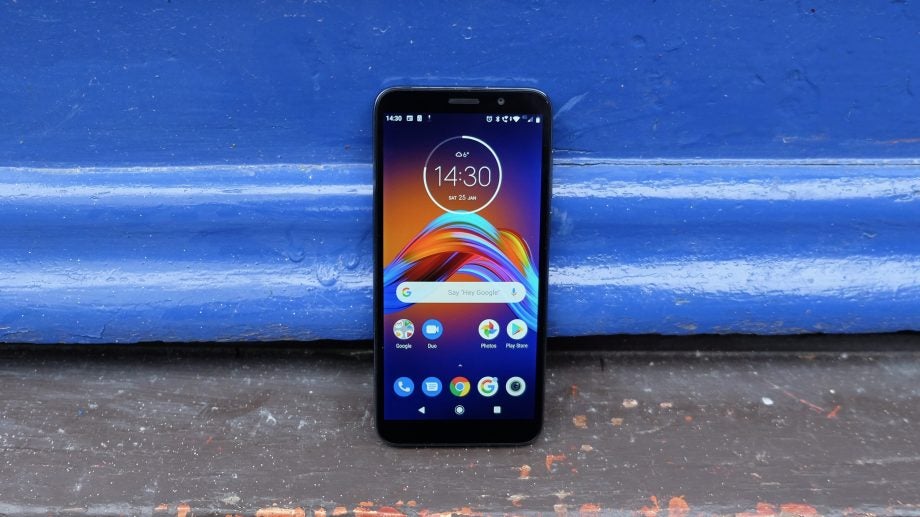
Verdict
Cheap isn’t always cheerful, and you can do a fair bit better by spending just a little more money.
Pros
- Super- cheap
- Solid design and build
- Decent enough screen
Cons
- Terrible performance
- Poor, feature-light camera
- Media really drains battery
Key Specifications
- Review Price: £89
- MediaTek MT6739 quad-core CPU
- 32GB storage with microSD
- 2GB RAM
- 5.5in 720 x 1440 IPS LCD panel
- Single 13MP camera
- 46.5 x 70.9 x 8.3mm
- 3000mAh battery
- Android 9.0 Pie
The Motorola Moto E6 Play is the most affordable phone in Motorola’s extensive range. And when you consider that the Lenovo sub-brand has carved out a formidable niche for itself in the value handset market, that’s quite an achievement.
At a launch price of just £89, it’s slightly cheaper than the £99 Moto E6 Plus and a little more expensive than last year’s £79 Moto E5 Play. Hopefully, this price lowers your expectations somewhat.
This isn’t a device for heavy users, mobile gamers, or those who care about the quality of their photos. It’s for those who want to spend the absolute minimum on a new handset, are willing to make a number of compromises to hit that low bottom line, but would prefer the core experience to be fundamentally sound. However, even on these terms the Moto E6 Play is far from an unqualified success.
Moto E6 Play design – Well-balanced and discrete, if smudgy
The Moto E6 Play steps back a little from the modern design concessions of the Moto E6 Plus. Out goes the latter’s notched display, which served to push the screen-to-body ratio more in favour of the screen.
Instead, we get a plain rectangle flanked by two chunky but evenly proportioned bezels to the top and bottom. It’s the way pretty much all phones used to be designed up until 2017 – and some more recent (and expensive) phones, such as the Xperia 5 and the Pixel 3A, continue with this approach.
Flip over the E6 Play and there’s a more modern glossy back cover, although it’s resolutely plastic rather than glass. It isn’t removable, so neither is the battery – a wise step back to normality from the E6 Plus in our view; though others will differ.
It’s a total fingerprint hazard, of course. But we’ve come to expect that, even with significantly more pricey handsets.
Around a third of the way down the rear of the phone you’ll find the familiar “Batwing” Motorola logo, which also serves as a fingerprint sensor. I’m pleased to confirm that this is reliable and reasonably quick – when the phone’s sluggish processor manages to keep up, that is.
There’s the option of a face-unlock facility, too, although given that it’s far less secure than fingerprint authentication, you’re probably better off keeping it switched off.
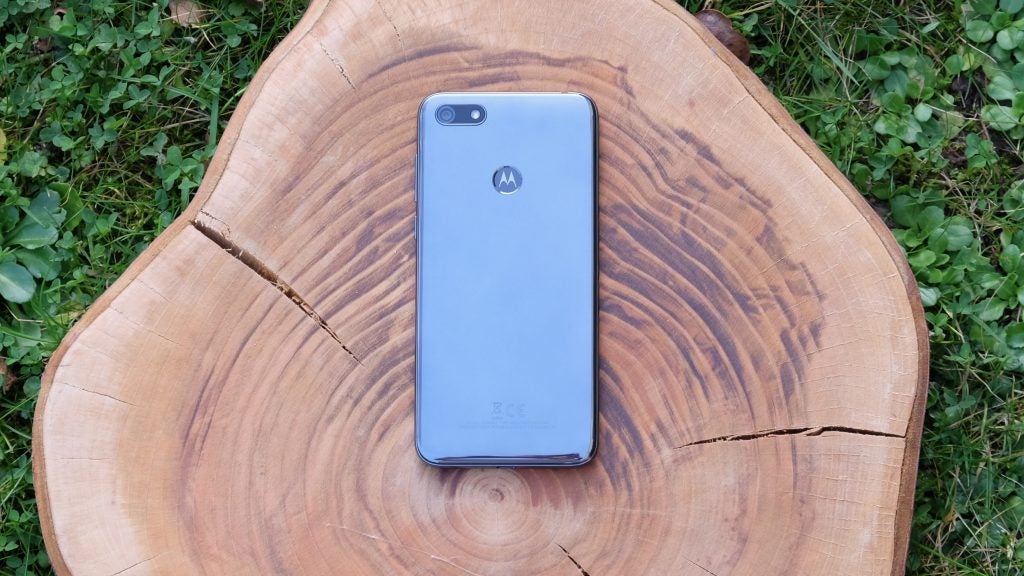
There’s a sense of solidity and balance that continues onto the right edge of the phone, where the power and volume buttons sit. They’re plasticky, but the power button is textured and sized completely differently, which makes both units easy to feel out.
There are a couple of notable inclusions and exclusions we should mention. The presence of a 3.5mm headphone jack continues to be welcome, if increasingly non-essential. It’s also good to see Motorola including a clear plastic case in the box – users of an £89 phone may be less precious over their phone, but they’re also less likely to be willing (or able) to splash out for repairs and replacements.
On the flip side, you get a micro-USB port in place of the superior USB-C for charging. That’s a shame, but it’s also a common concession down at the bargain basement end of the market.
Finally, there’s no NFC, which means no Android Pay mobile payments.
Moto E6 Play display – Clear and colour-accurate, it’s fine for every day tasks
Motorola has gone with what could be considered a smaller display size in the Moto E6 Play. That isn’t to say that 5.5 inches is exactly compact, but these things are all relative. The Moto G7 Play packs a 5.7-inch display and the Moto E6 Plus has a 6.1-inch screen, to name two similarly priced examples.
Given that this is a phone that will likely be bought a lot for kids, it seems smart to keep the screen size well under 5.5 inches. I’d suggest that Motorola perhaps should have gone even smaller and avoided some of the compromises found elsewhere, but we’ll get to those in a bit.
With this smaller size, the Moto E6 Play display wears its HD+ (1440 x 720) resolution a little better than the Plus. True, a pixel density of 295ppi is nothing to shout about, but it’s perfectly acceptable in a sub-£100 phone.
You may have come to expect Full HD as the bare minimum for affordable phones. But the Moto E6 Play belongs to a tier that’s below what we’d usually term affordable. As such, HD+ is just fine.
What’s important is that this IPS LCD is reasonably clear and colour-accurate, and that everyday tasks look crisp enough. Which they do. Sure, if you go pixel-peeping in Google Photos, it won’t take long to notice the fuzzy edges. But if you’re intent on doing that then we’d politely suggest that you may have either bought the wrong phone or set your expectations too high.
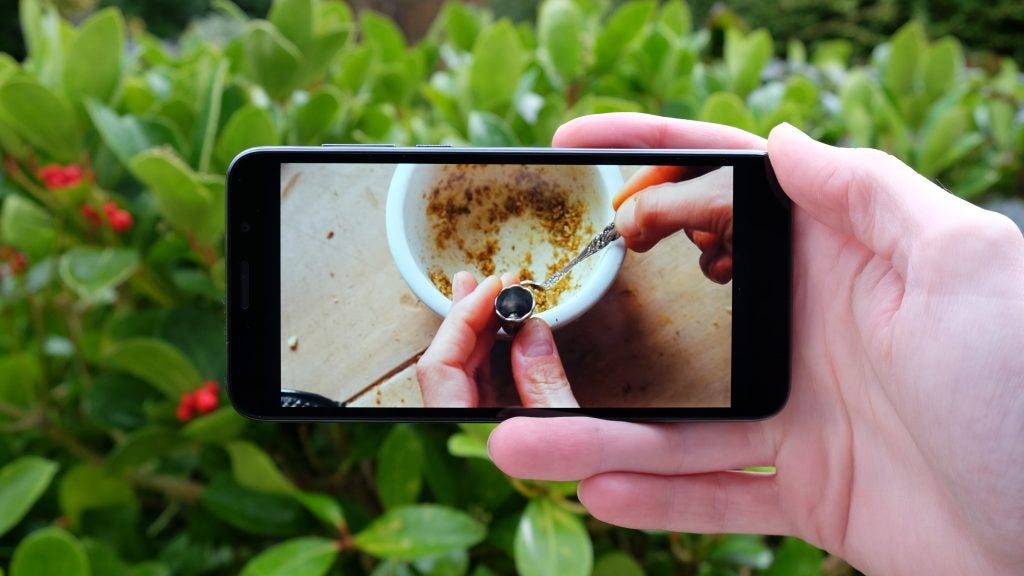
Step outside and you’ll find that the display washes out somewhat in the light. But this is a common issue even with more expensive phones, and the E6 Play remains usable regardless. Conversely, the auto-brightness is often too aggressive at reigning things in when you’re in lower lighting conditions.
Motorola has also returned to a more regular 18:9 aspect ratio for the Moto E6 Play, which remains a better bet than some of the super wide-screen alternatives. It’s far closer to the general standard adopted by streaming and media services, which means fewer chunky black borders and compatibility issues.
Moto E6 Play performance – Stutters and shutdowns are all too common
Performance is the Moto E6 Play’s defining weakness. We don’t expect a sub-£100 phone to be blazingly fast – or even moderately fast for that matter. But we do expect a base level of fluidity when doing the basics, and that just hasn’t been provided here. There are frequent stutters and slowdowns while flicking between the homescreens and menus, and occasional lengthy pauses when waking or powering up the phone. Jumping into the camera app can be teeth-grindingly slow.
A large part of this performance shortfall is down to the choice of CPU – a MediaTek MT6739 quad-core chip that trails even the modest silicon provided for the Moto E6 Plus before it.
This wretched chip was considered unworthy when it shipped in the Honor 7S in mid-2018. I found it to be similarly terrible in the Alcatel 1X around a year later. It hasn’t miraculously become any better in early 2020.
Another factor is the provision of just 2GB of RAM, which we’ve generally found to be too little for a fluid Android experience. This lack of memory really shows when switching between apps.
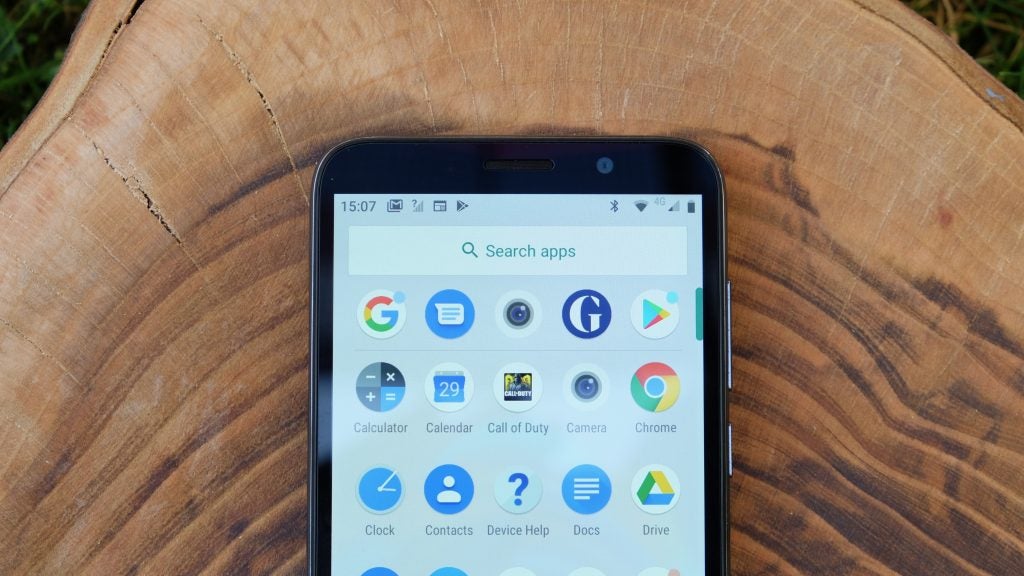
Needless to say, if you’re at all into your mobile gaming – and particularly fast-paced 3D games such as Call of Duty Mobile or PUBG Mobile – then you’ll want to set your sights a little higher than the Moto E6 Play. You can play both games on Low settings, but they won’t be very pretty or fluid.
Regardless, the phone’s poor performance level should make anyone that values a smooth smartphone experience think twice about a purchase. As tempting as it is to give the Moto E6 Play a pass because of its price, the harsh truth is that you don’t need to spend much more for a markedly improved experience. Even within the Motorola stable, an extra £10 will get you the Moto E6 Plus or the Moto G7 Play – both superior options.
Moto E6 Play software – Clean, in every sense of the word
The Moto E6 Play doesn’t join the Motorola One family in adopting Android One, but it might as well have done. The experience is very similar indeed to Google’s lightweight stock Android provision. This is Android 9.0 Pie, more or less exactly as Google’s boffins dreamed it up.
In fact, the Moto E6 Play – just like the Moto E6 Plus – is arguably even less Motofied than the company’s other phones; even its Android One models. You don’t get any of Motorola’s gesture-based shortcuts here, for example. Which is actually a bit of a shame come to think of it, since they’re quite handy.
Another positive effect of Motorola’s approach here is the complete lack of extraneous apps. Google’s impressive suite of applications handles everything from email to calendar maintenance. Chrome takes care of your web browsing, Google Photos manages your images, Messages yours texts – which is all in blissful contrast to rival efforts from Huawei, Oppo and the like.
Anything extra can be downloaded from the Google Play Store of course, and there’s ample storage for such customisation. You get 32GB as standard, which is a decent amount for such a cheap phone. There’s also potential for expansion, courtesy of a microSD slot.
Moto E6 Play camera – On a night out, leave it in your pocket
Motorola has rolled its photographic game right back to just a single 13-megapixel f/2.2 sensor for the Moto E6 Play.
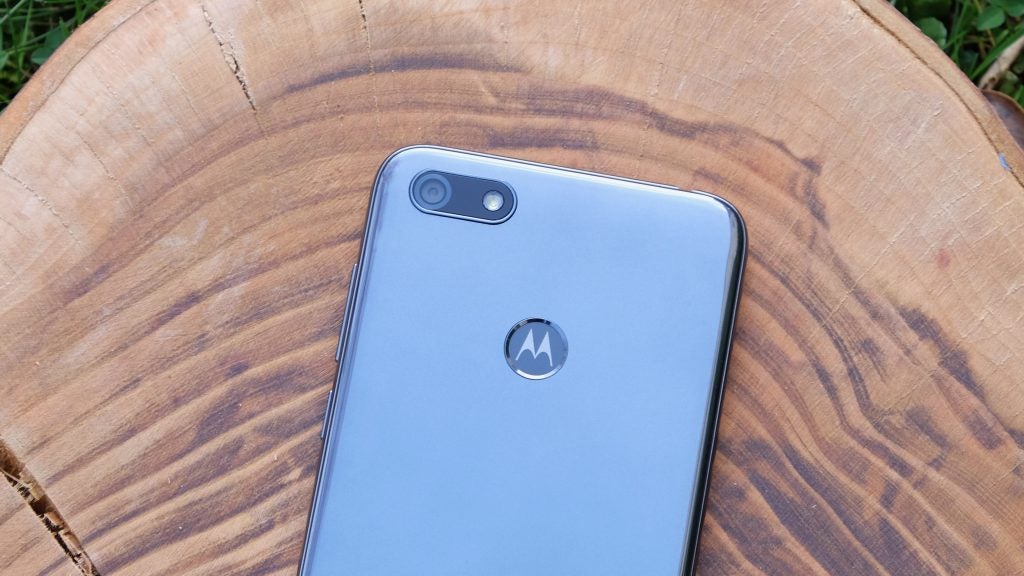
We’d never judge a phone camera’s capabilities by such a crude numerical measure, of course – just look at the Pixel 3A for evidence of what can be done with one sensor. But it should surprise no one to learn that the E6 Play is no Pixel 3A.
Daylight shots are frequently murky and poorly exposed, with no auto-HDR mode to counter those bright skies. You need to manually activate HDR, which will improve those muddy foregrounds. But HDR shots also tend to overexpose and to leave ghosting effects on moving elements.
Motorola’s crisp Camera UI can help to mitigate some of the exposure issues: just touch and swipe up or down to take direct control. But it’s far from ideal.
At night-time, or in low lighting, you might just conclude that it’s better not to bother taking any snaps with the E6 Play at all. Low to moderately lit restaurants yield murky, blurry, poorly focused food and dining partner shots, while out in the dark of a British winter’s night the noise is overwhelming. A dead-steady hand and plenty of patience is essential, and even then…
While we’re on the subject of patience, I’ve mentioned already how slow the Moto E6 Play can be to even get into the Camera app. We’re talking more than a few seconds at times, which is an age in smartphone and photography terms.
No second camera – and no Google-like software and hardware trickery – means that there’s no Portrait mode to call on here. As such, you’ll need to work to get your own modest bokeh effects and sharp subjects.

With HDR off by default, bright skies can really ruin regular shots

The E6 Play struggles to focus in less than perfect lighting

The colours are nice and accurate, but there’s a lack of sharp focus here

Even with a steady hand and lots of artificial light, this night shot is noise-central

This daytime shot (albeit on a miserable day) came out murky and weirdly focused

With plenty of light and no extremes of light, the camera can take some okay shots

With HDR on you get overexposure and ghosting effects

By default, the foreground elements came out a little murky here
Moto E6 Play battery life – Around two days is good going for light users
One area in which the Moto E6 Play has the potential to really excel is battery life. But it will only do so provided you’re not attempting to consume much media on it. And given the aforementioned performance woes, you probably shouldn’t be.
While a 3000mAh battery might sound respectable rather than outstanding, it has to be considered within the context of the Moto E6 Play’s other specs. With a low-power CPU and a relatively modest HD+ display, it simply isn’t as power-hungry as most other phones.
The results can be very good if you’re a light user. I was able to get two and even on one occasion three days of usage out of a single charge. The key to this was using the phone only for the bare essentials – some messaging, a couple of phone calls, and some light web browsing.
However, choose to use the Moto E6 Play for some more intensive media playing and you’ll need to fall into the usual nightly charge routine – or even find a handy wall socket. I found that an hour of Netflix streaming, with the screen cranked right up to full brightness, drained 21% of the battery. A decent result would have been around half of that.
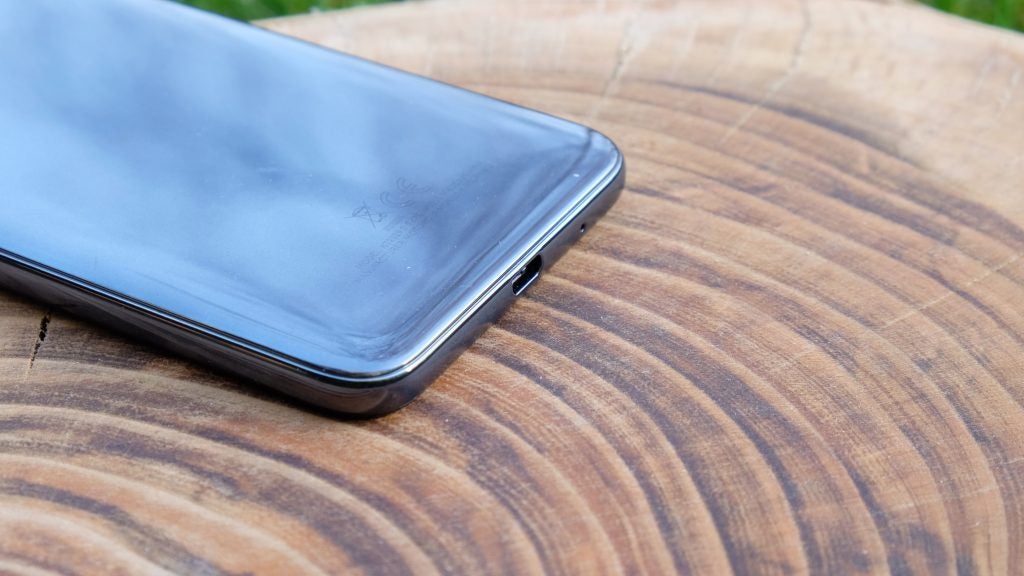
Recharging isn’t massively speedy with the bundled 5W charger, either. Plugging the E6 Play in at 60%, it gained 9% in 15 minutes, while a further 15 minutes yielded the same result.
Should you buy the Moto E6 Play?
The margins are fine when you’re shopping at the very bottom of the smartphone market. While the Moto E6 Plus makes a lot of sense at £99, the Moto E6 Plus is a lot tougher to justify at £89.
It feels like the cheaper phone has made one compromise too many with its poor CPU, and the frustratingly halting performance that results from this component. A camera that fails in some fundamental areas is another cut too far.
- Our best cheap phones offers better budget picks
Solid design, a decent screen and clean Android software make the Moto E6 Play a tempting proposition at the price. But spending just a little more money will result in a much more enjoyable day to day experience.
It’s always a tricky business balancing out the various features of a sub-£100 phone, but the Moto E6 Play trips up in two fatal areas. This budget phone’s performance is simply too compromised for comfort, while its stripped-back camera makes it difficult to get usable results in everyday conditions.
Cheap isn’t always cheerful, and you can do a fair bit better by spending just a little more money.
How we test phones
We test every mobile phone we review thoroughly. We use industry standard tests to compare features properly and we use the phone as our main device over the review period. We’ll always tell you what we find and we never, ever, accept money to review a product.


